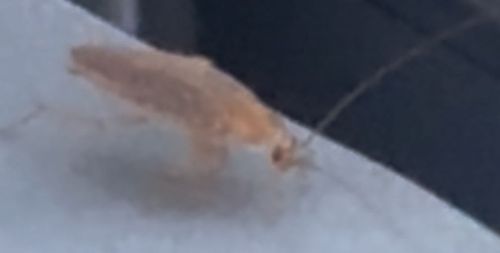Booklouse
Scientific Name: Trogium pulsatorium (or other Psocoptera species)
Order & Family: Psocoptera (Booklice and Barklice), Trogidae (Booklice)
Size: Typically 1-2 mm, though some species can be larger.

Natural Habitat
Warm, humid, undisturbed places with decaying organic matter, such as old books, papers, stored food, wall voids, and often found indoors.
Diet & Feeding
Feeds on microscopic mold, fungi, starch, glue in bookbindings, paste, cereals, and other organic debris. They do not bite humans or pets.
Behavior Patterns
Nocturnal, cryptic, and run quickly when disturbed. They are often found in large numbers if conditions are favorable (high humidity and food sources). Females can reproduce parthenogenetically (without mating).
Risks & Benefits
Generally considered a nuisance pest indoors. They can damage books and stored food products by feeding on starches and molds. They do not transmit diseases, bite, or cause structural damage. No direct benefits to humans, but play a role in decomposition in their natural outdoor habitats.
Identified on: 9/19/2025